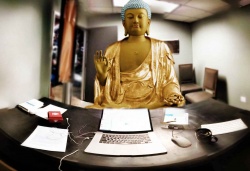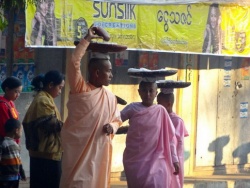Martial arts: Ostentatious
What's it with all the ostentatious language, uniform, belts, etc. used by some "masters."What if your teacher or professor walked into the classroom dressed this way. Would you respect her or believe what she said? Why would you want to give your time and money to a power hungry, ostentatious, egocentric "master?"
Ostentatious language
Most of the martial arts used in the world had their roots in the Far East. The first use of these arts in Western countries was usually by servicemen returning from military duty in the Orient in the 1940’s and 1950’s, where they had learned the local martial arts. Later in the 1950’s, their original instructors immigrated and began teaching their arts.
Since these servicemen originally learned their martial arts in foreign countries, they learned the foreign terminologies used in the arts, and they used these same terminologies after they returned to their home countries. After all, it was what they knew, and it sounded mysterious and intriguing to the locals. When the foreign instructors immigrated and began teaching, it was much easier for them to use their own language whenever possible, and since the local people had already been exposed to the terminology used by the servicemen, it was readily accepted by them.
For some martial arts, keeping the terminology in the original language has helped spread the arts throughout the world. It allows students that use many different languages train and compete together. For example, while stationed in Iceland, I trained in Judo with Icelandics with a Korean instructor. He did not speak Icelandic, Japanese, or English, they did not speak Korean or Japanese, and I did not speak Icelandic. Japanese, or Korean, however, we all understood the common Japanese terminology of Judo. So using terminology in the language of the home country of a martial art has its usefulness. However, creating ostentatious verbiage serves no useful purpose.
Inventing ostentatious terminology makes the “founder” of a martial art and his or her followers appear knowledgeable and authoritative on the subject. This similar to the way street gangs or other cliques use their own slang to appear “cool” or “different” in the presence of others. As for the regular public, we prefer to use our own common language in simple terms that everyone understands.
Just “founding” a new martial art is not enough for some “masters,” they also feel the need to complicate matters by using pretentious wording to describe the simplest of things in their arts. A good example of this is Kenpo Karate, where focusing a technique is called “Gravitational Marriage” and causing a taller opponent to bend over is called “Height Cancellation.” They also give some title to every technique they use, such as a left hook is called the “Sword of Destruction” and a two-handed push is called “Alternating Maces.” Then they explain simple theories as thought the knowledge was handed down by the gods. All this unnecessary verbiage adds nothing useful to the art. It only serves to enhance the ego of those who pride themselves in their ability to use the terminology.
So if you are person who likes to create the illusion of intelligence by using slang words for common activities, then choose a martial art that does so. However, pretentious words and far-out theories with complicated explanations are not necessary to learn and be proficient in a martial art.
Ostentatious uniforms
Martial arts that use ostentatious words also tend to use even more ostentatious uniforms, as do other otherwise non-pretentious arts. It all seems to have started in the 1960’s and 1970’s in the United States, when the ”in thing” to do was to fight the establishment. Uniforms started appearing with different colors, instead of the standard white or black. There were rainbow colored uniforms and of course uniforms made in the pattern of the flag of the ultimate establishment, the United States government. Then, as more and more martial arts styles were “founded,” even more ostentatious uniforms began to appear.
It seems that many “masters” need to have their own martial arts, their own terminology, and also their own uniform designs. Nowadays, uniforms of some styles not only have different designs and colors; they have numerous patches, shoulder boards, stripes on the sleeves, embroidery, and other accouterments. Some uniforms of “masters” appear to be pseudo-military in appearance. They seem to believe that the uniforms make them appear as a respected, high-ranking military officer, when in fact; they either never served in the military or were low ranked personnel, and always wished they had the rank and prestige.
The alternative
Unlike the ostentatious martial arts, most martial arts strive to make students better warriors and better people, not to build the egos of their masters and their followers. The highest ranked persons in these arts wear simple uniforms with a belts or sashes that indicate their rank. Their students know and respect them for their knowledge, abilities, and humility, not their pomp and circumstance. When searching for a martial art, you might try one of these arts.

